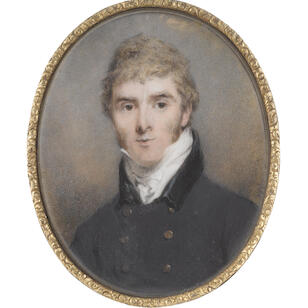Though neckties have been worn for many years, styles have evolved and changed throughout the years. These changes are greatly impacted by current events, such as war and cinema.
A few examples of such changes are listed below:
A forerunner to the modern necktie was the
cravat.
As was the case with most fashion in its day, the cravat was derived from military influence.
This fashion initially began with Croatians during the reign of King Louis XIII of France.
Because war uniforms did not exist at that time, Croats tied different clothes under their necks to indicate position. This French were taken in by this style and adopted it for their, modifying it slightly by changing the material to new loose linen.
The King of France adopted this style as it was much more practical to wear than a high lace collar. After it was adopted by the royal house, the rest of the country soon followed suit.
 |
| Retrieved from http://mrsociallyactive.blogspot.com/2010/06/neckwear-cravat.html |
As a result of women's suffrage and WWII, the role of women began to change drastically.
As a result, the men's fashion (such as neckties) started being incorporated into women's wear.
 |
| Retrieved from http://www.nww2m.com/2013/03/march-1-1943-life-magazine/ |
Neckties were also made popular in 1977, with the release of Annie Hall.
This is a strong example of the impact that cinema can play in fashion.
This film has influenced women to wear more masculine attire, such as neckties, again and again throughout the decades. Evidence can be seen on the runway, the red carpet, and popular dress practices.
Speaking of the role of cinema, have you noticed the impact that television and pop culture plays in what we wear? Ties-- bow ties, most specifically-- have increased in popularity in connection to the popular British show, Doctor Who.
Matt Smith, who plays the role of "The Doctor", is known for popularizing the expression "Bow ties are cool". Acceptance of the bow tie has grown immensely over the last several years. While it is ridiculous to suppose that is entirely a result of Dr. Who, there is no questioning that it has playing an important role.
 |
| Retrieved from http://unrealityshout.com/blogs/doctor-who-check-out-new-series-6-promo-pictures |
Throughout the years, neckties have predominantly been worn men. I have pointed out several instances in which women have incorporated the dress practice into their attire. Though I have showcased several instances, it is important to note that these dress practices are notable because they are rare.
One last example of women that made the necktie their own is that of Avril Lavigne.
As a popular singer (especially for teens and the younger generation), the fact that she wore ties did have some impact on dress practices. Though her "punk" style may not have been featured in upper-class dress practices, it did result in connecting the necktie to "skaters".
This act is of notable importance because the necktie became connected to more than those of the upper class or professional world.
 |
| Retrieved from http://marianaribeiro.buzznet.com/user/journal/11718261/avril-lavigne-styles/ |
Skinny ties were made popular by many musical groups, such as the Beatles in the later 1950's.
The skinny tie went out of style in the late 1960's or early 1970's as designers started opting for wider cuts.
In the 1970's, the average tie measured about 3" wide (which is comparable to today's standard of 3.5").
The classic vintage skinny tie of the 1950's ranged from 2-2.5".
As we have seen this trend cycle back to the mainstream, it is interesting to learn of what made it popular originally.
There are those that wonder if the necktie will go out of style. There has been quite a bit of controversy regarding this topic, with vocal supporters speaking out for both sides.
One the factors that has introduced this topic is the example of U.S. President, Barrak Obama.
He can often be seen without a tie, arguing that the accessory is not a necessity in all situations.
What are your thoughts on the matter?
So what about the trends in today's fashion? How did they appear?
That's a great question.
First, let's identify some of the current trends.
Neckties include a variety of designs. (Not quite like the 1980's or 90's, thank heaven.)
Plaid and stripped ties are especially popular.
Additionally, this photograph illustrates that they way that ties are being worn has also changed.
Historically, neckties have been known to be worn with white, collared shirts.
The picture below features more of a denim material. This may be illustrating something of the casual attitudes in our current society.
 |
| Retrieved from http://designyoutrust.com/2012/09/blue-red-plaid-tie-by-stalward/ |
As previously mentioned, the shirt accompanying neckties has also experienced changed over the last several years. Featured here is an example of a plain necktie on a plaid shirt. It is also important to note that it is also common practice to pair a patterned shirt with a patterned or textured tie, as can be seen in the photos below.
 |
| Retrieved from www.popsugar.com |
 |
| Retrieved from lookbook.nu |
 |
| Retrieved from www.esquire.com |
Perhaps the variety seen in necktie fashion is reflective of the economic prosperity of an area. It would seem to reason that the more individual's have to spend, the more they would be willing to buy and try new things. Unfortunately, there is no clear answer.
What are the factors that you think these (and other) trends are popular?



